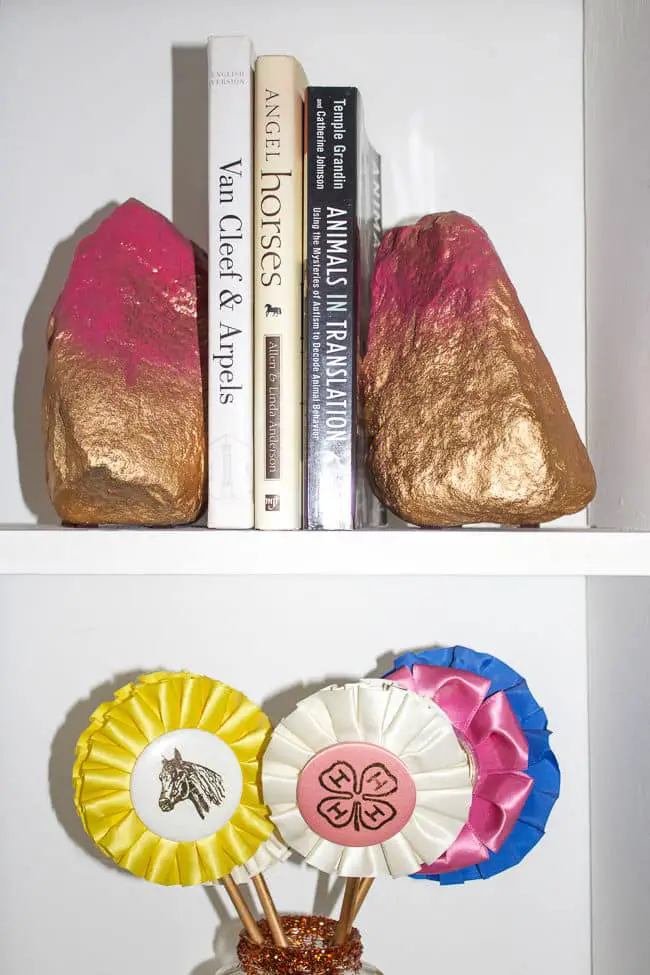

These adorable bookends were created by Allie at Four Eyed Wonder. Add a few more pebbles/whatever finishing touches you may have and let the bookends dry a few more hours before use. If desired, once this layer is dry, add the water ripple special effect (the last layer in the kit).Ĩ. Once the water undercoat is dry, apply the realistic water effect that comes with the Scene-A-Rama kit. Tweezers may come in handy during this step for holding the figures in place while the glue dries.ħ. While the undercoat dries, start gluing down your animal figurines, pebbles, and trees in your desired location. You can also add small pebbles on top of the undercoat to look like stones submerged in the water.Ħ. If you don't have the kit, you can use thick acrylic blue paint instead. Paint on the water undercoat that comes with the Scene-A-Rama kit in the area where you scraped off the grass. Add a thin layer of glue to the outside border of your stream on both sides to create a seal when you add the water.ĥ. If you wish to add a stream to your bookends, scrape off the grass using a blunt object (we used the end of a foam brush) until you reach your desired stream shape. Press down lightly with your finger to adhere. While the glue is still wet, sprinkle on the faux grass. Using a paintbrush, paint the glue mixture on the top of the block that has not yet been stained.ģ. Once your blocks are dry, create a mixture of tacky glue and water in a bowl. No need for a second coat - one should do it. You can stain the bottom of the blocks if you choose but don’t stain the top. Using either a clean cloth or a paintbrush, begin to stain your wood blocks by gently applying the stain in the direction of the wood on all 4 vertical sides of the blocks. Spread out newsprint on your work surface. Materials: two wooden blocks approximately 8 inches tall and 4 inches in diameter (you can have them cut specially at the hardware store), newspaper, chestnut-colored wood stain, tacky glue, a paintbrush, faux grass (available at craft stores), assorted pebbles and stones, assorted faux conifer tree figures, small plastic woodland figurines, and a Scene-A-Rama water kit (optional).ġ. Erick and Emily from Hello Home Shoppe show us how. The hope was to fill in the remaining shallow area and smooth it over to completely fill up the hole.Make these Anthropologie bookends, which cost $168, with just $40 worth of materials easily available at a hardware store or Hobby Lobby. Once I was satisfied with the placement of the cardboard round and the paint was dry I got out my wall mending agent a.k.a. Left a lot to be desired - which is why I added the paint and the Here is one corbel filled with just the unpaintedĬardboard round and no spackle, compared to the empty one on the right.įrom this distance the filled one looked pretty good, but in person it I then used hot glue to adhere the cardboard rounds to the batting, The corbels were dry I filled the center holes with some folded batting Then I painted the corbels and the cardboard rounds with my favorite go-paint, Rust-Oleum Chalked Ultra Matte Paint in Linen White. I placed the ribbon ring onto cardboard and traced the inside of the ring. Turns out that my small rolls of ribbon seemed to be just the size I needed. So I started looking around my crafting stash for something I could use as a circle template that was the same size as the sconce opening. And that I had to come up with an out of the box solution. That's when I realized I was on my own here. Who wants to look at those holes? So the wheels in my brain started turning as I thought of possible ways of "filling" the holes. Those holes certainly put a wrench in my plans. Your curtain rods through! Pretty fancy, huh? Just not what I wanted

Learned through my research that the large holes were there to place The problem is that when I got them home and actually looked at them, I noticed the holes and said to myself, "Crap." I I'd figure out what to do with them later. I had experience making DIY rustic corbel French farmhouse shelves, and corbels have become my thing. I had never really noticed "drapery sconces" before so I was innocently thinking that I got some corbels I could use for shelves or maybe as bookends. I was so excited I didn't even notice they had large HOLES in them! How does that happen? Hello.


 0 kommentar(er)
0 kommentar(er)
